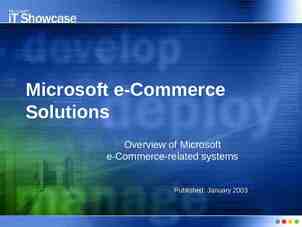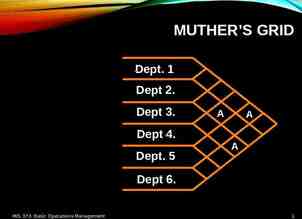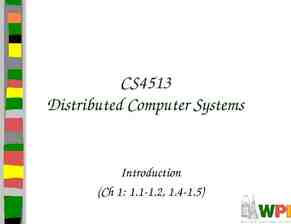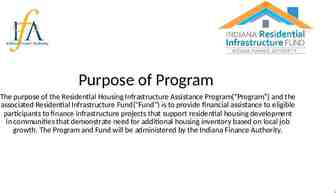Energy Division, Customer Generation Joshua Litwin, Regulatory
34 Slides2.40 MB

Energy Division, Customer Generation Joshua Litwin, Regulatory Analyst (DAC-GT & CSGT) [email protected] Cherie Chan, Regulatory Analyst (GTSR) [email protected] California Public Utilities Commission

DAC-GT & CSGT January 2022 Applications for Review Guidance Template Overview & Discussion September 15, 2021 9:30AM – 11:30AM California Public Utilities Commission

Workshop Logistics Today's presentation (.pdf) will be sent to all participants afterwards. Mute/ Unmute Participant List Chat Audio Options Leave Meeting The 2022 Applications Guidance Template is available here and on the Solar in DACs webpage under Events. Please mute yourself when not speaking Submit questions for speakers in the chat box or raise your hand to be unmuted by staff. Chat questions will be read aloud by staff Raise Hand 3

Workshop Logistics Online only Audio through computer or phone 1-415-655-0002 Access code: 2489 562 3796 Safety Note surroundings and emergency exits Ergonomic Check This workshop is NOT being recorded Hosts: Energy Division Staff: Tory Francisco Josh Litwin Cherie Chan Fang Yu Hu 4

Ground Rules Workshop is structured to stimulate an honest dialogue and engage different perspectives Keep comments friendly and respectful Chat feature is only for Q&A or technical issues. Do not start or respond to sidebar conversations 5

Agenda 9:30 Introductions Safety 9:35 Goals/Outcomes of Webinar & Scope of Discussion 9:40 Applications for Review Process 9:45 Proposal to Include GTSR and DAC Programs under "Green Access Programs" 9:50 DAC & GTSR Current Program Status B R E A K 10:10 DAC-GT & CSGT Major Topics & Discussion 10:40 GTSR Major Topics & Discussion 11:10 Q&A 11:25 Close (We may end earlier) California Public Utilities Commission

Goals and Outcomes California Public Utilities Commission

Goals and Outcomes of This Webinar Provide further guidance on the format and content of the January 2022 Applications for Review Proposal to include GTSR in Applications Spark discussion among stakeholders before IOUs begin drafting Applications Identify program issues and topics for inclusion Answer Program Administrator and stakeholder questions about Applications process California Public Utilities Commission

Scope of Today's Discussion California Public Utilities Commission

In Scope Programmatic Challenges Proposed Changes to Programs Cost-Benefit Analysis Are programs meeting stated goals? Unintended Consequences and Externalities Procurement Challenges California Public Utilities Commission Out of Scope Active Petitions for Modification or Advice Letters under CPUC review

Applications for Review Process California Public Utilities Commission

Authority for Applications Process D.18-06-027 (June 2018) established that each IOU would file an Application for Review for the DAC-GT and CSGT programs by January 1, 2021 (one-year extension granted by Exec. Dir. in Sept 2020). Proceeding(s) initiated by these applications would: Include a review of both programs’ costs and benefits; Result in revisions to the tariffs, if appropriate California Public Utilities Commission

Authority for Applications Process Resolution E-4999 (May 2019) identified several items the CPUC may review as part of the Applications: Address whether and how to allocate any unused capacity to IOUs or participating CCAs, if reserved CCA capacity remained unutilized after Jan 1, 2021 (now Jan 1, 2022). [10 kW from Valley Clean Energy remains] Address any situation(s) in which a CCA expands, or a new CCA launches, in an area where a CSGT project exists or is in development Review the DAC Program cost containment thresholds based on relevant cost data which should be available for initial DAC-GT and CSGT project bids The guidance template and this webinar aim to better communicate what additional information the Applications should include. Any additional topics from stakeholders can be raised by parties in comments on the Applications early next year. California Public Utilities Commission

Green Access Programs (GAP) Proposal California Public Utilities Commission

LEGISLATIVE AUTHORITY GTSR: Expand access to "renewable energy resources to all ratepayers who are currently unable to access the benefits of onsite generation. [and].create a mechanism whereby institutional customers commercial customers and groups of individuals . . . can meet their needs with electrical generation from eligible renewable energy resources.“ – SB 43 (Wolk 2014) DAC-GT & CSGT: Ensure "that customer-sited renewable distributed generation continues to grow sustainably and include specific alternatives designed for growth among residential customers in disadvantaged communities.“ – AB 327 (Perea 2013) California Public Utilities Commission

Green Access Programs (GAP) Expanding Access Beyond Rooftop Solar Green Tariff Concept Energy Source Customer Purchase Transaction 100% renewables w/o: contract, commitment, roof Pool of renewables projects 50%-100% of customer’s historical monthly usage IOU bills customer Enhanced Community Renewables Multiple subscribers share the output of a single project A designated local project kWh production of customer’s subscribed portion of project Agreement between developer and customer; IOU bills customer Enabling Legislation Senate Bill (SB) 43 Expiration When 600 MW capacity procured and enrolled: participants can remain 20 years California Public Utilities Commission Disadvantaged Communities – Green Tariff Similar to Green Tariff but at a 20% discounted rate Pool of renewables projects 100% of customer’s historical monthly energy usage IOU bills customer Community Solar Green Tariff (CSGT) Local community solar at a 20% discounted rate A designated local project kWh production of customer’s subscribed portion of the project Agreement between IOU and developer; IOU bills customer Assembly Bill (AB) 327 (Perea, 2013); Includes DAC-SASH When 199 MW capacity procured and enrolled; DAC-GT is 20 years, CSGT is term of project

GAP Rationale Bridge the solar access "GAP" for customers with structural, financial, and other barriers. Increases regulatory and administrative efficiencies Similarities in program design and cross-cutting issues between the market-rate seminal (GTSR) and targeted low-income (DAC-GT & CSGT) Green Access Programs. DAC-GT is modeled after the Green Tariff portion of the Green Tariff/Shared Renewables Programs CS-GT program is structured after the Enhanced Community Renewables (ECR) portion of the GTSR program. Reforms to the DAC-GT and CSGT programs could be considered wholistically. California Public Utilities Commission

Program Status California Public Utilities Commission

DAC-GT Program Status 12 Program Administators (3 IOUs & 9 CCAs) 14,000 enrolled residential customers using interim GT or RPS resources (PG&E and Clean Power Alliance) 10 kW of reserved capcity for Valley Clean Energy remains unclaimed 23% of available 158MW capacity has been procured California Public Utilities Commission

CSGT Program Status 8 Program Administators (3 IOUs & 5 CCAs) No enrolled residential customers until new projects are built All reserved capacity claimed 32% of available 41MW capacity has been procured California Public Utilities Commission

DAC Procurement Status California Public Utilities Commission *Approved capacity based on PG&E ALs 5996-E & 6229-E; SCE AL 4297

GTSR Program Status 3 IOU Program Administrators 162 new MW of Renewables Procured so far 98 MW of reserved Environmental Justice capacity remains unclaimed 74% of available 600 MW capacity has been procured California Public Utilities Commission

GTSR Program Status: Reaching the 600 MW Cap 600 500 400 74% of Available Capacity Remains SDG&E 300 SCE 200 PG&E 100 0 Capacity California Public Utilities Commission Green Tariff Contracts Community Renewables Contracts

GTSR Program Status: Quarterly Reports by Utility 300 250 200 150 100 50 0 Capacity California Public Utilities Commission Green Tariff Contracts PG&E SCE Green Tariff Enrollment Community Renewables Contracts SDG&E

Stretch Break Image Source: iamthinks.blogspot.com 25

Guidance Template https://www.cpuc.ca.gov/-/media/cpuc-website/divisions/energy-division/documents/solar-in-dis advantaged-communities/2022-gap-applications-guidance-template.pdf California Public Utilities Commission

DAC-GT & CSGT Topics California Public Utilities Commission

DAC-GT & CSGT Major Topics 2021 Independent Evaluation - topics from PA Interviews: Connecting: CBO/community sponsors with solar developers Procurement challenges: size, siting, and interconnection Marketing & outreach: how to connect CBOs and community sponsors Workforce development: how to track training, etc. Environmental/GHG benefits: how to accurately market and report CCA expansion: whether/how to reallocate capacity Geographic eligibility: whether/how to include low-income customers in tribal or other areas Uniform budget template: For use in February Annual Budget Advice Letters and to track funding sources (GHG & PPP) California Public Utilities Commission

What Additional Topics Would You Like Included? Technologies MCE: Consideration of solar resources, and whether they can be shared with storage in RFOs moving forward. General Goal-Setting Evergreen Economics has shared Logic Models, Program Outcomes, and Metrics, which ultimately link back to Program Goals Draft 2021 Independent Evaluation Report is still on schedule and should be included in Applications. Clarifying and Coordinating Timelines DAC-GT: CCAs are noting that they have launched projects with interim resources. While they don’t show up in reporting, CCA DAC-GT programs are effectively full: Construction is just catching up to procurement, which is catching up to enrollment. CSGT: These are still open opportunities which remain largely unfulfilled. Pre-Enrollment or autoEnrollment to enhance low-income enrollment to meet 25% threshold should be considered. Procedural Discussion IOUs are DIRECTED to file Applications. CCAs may file. If only IOUs file applications by Jan 2022, CCAs can add comments on the record. CCAs are generally aligned with comments noted so far, aside from CCA expansion. Having CCAs engage on the IOU applications could be the most efficient mechanism for consideration. Suggestion on CCA Expansion: Stakeholders (CCAs and IOUs) may schedule some offline collaboration in advance of the Applications. This may also need to be coordinated with upcoming DAC Billing Workshop and GTSR Developers Forum. California Public Utilities Commission

GTSR Topics California Public Utilities Commission

GTSR Major Topics PCIA: Consider whether the cost-effectiveness proxy (currently the Power Charge Indifference Adjustment PCIA) might be updated or not, and present options to do so. Branding: Coalescing program branding may reduce Marketing, Education and Outreach (ME&O) costs and limit customer confusion. Access: How to enhance participation and eligibility for the 100 MW DAC reservation? How might the 1 MW cap hinder project adoption in Environmental Justice (EJ) communities? Community Interest: Streamlining or adopting a way of demonstrating community interest and enrolling customers. Reporting and Metrics: Propose reporting requirements and Key Performance Indicators (KPIs) or metrics to measure program effectiveness. California Public Utilities Commission

What Additional Topics Would You Like Included? Incorporate storage into community-based renewables programs – what steps should there be for consideration? Environmental/GHG benefits: how to accurately market and report Ratepayer indifference constraints Setting aside capacity for Community Renewables so that Green Tariff rate options don’t take up all the capacity (also leaves IOUs with all the financial risk) – strong support from CCSA, as Community Renewables remains highly undersubscribed. Template Questions: Question about schedule: Section G included a typo and does not need to be included. What is included in the Guidance Template is a recommendation, not a requirement. The minimum information required is what is in the Decisions and Resolution 4999-E. We recognize that the template goes beyond the minimum required, but Energy Division would like provide additional guidance and help ensure that this process is robust and addresses pressing issues. SCE and SDG&E: Changes you are looking for would need to be initiated on the legislative end. SDG&E is experiencing high attrition because the rate is increasing very quickly due to CCA attrition (spiral). Fixes which would be needed to be put in place require legislative changes. Long-term stranded cost issues. SCE – 2 MW Per-Customer Cap - businesses want to be 100% green, and there is no way to fulfill this on their end given this legislative requirement. California Public Utilities Commission

Q&A Reminder: Please submit questions/comments via the WebEx chat and/or use the “raise hand” function. Image Source: netclipart.com 33

For more information: [email protected] www.cpuc.ca.gov/SolarInDACs [email protected] www.cpuc.ca.gov/GTSR California Public Utilities Commission






